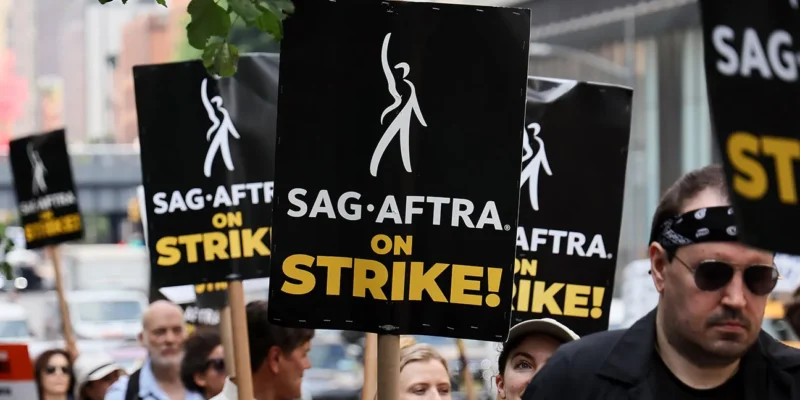
For the first time in more than 60 years, Hollywood is in the grip of a major strike as both actor and screenwriter unions have simultaneously walked out, demanding fair treatment and compensation.
The Screen Actors Guild-American Federation of Television and Radio Artists (SAG-AFTRA) and the Writers Guild of America (WGA) are leading the charge, with stars including Cillian Murphy, Emily Blunt, and Florence Pugh leaving glamorous events to join the protests.
The strike comes after SAG-AFTRA failed to reach an agreement with the Alliance of Motion Picture and Television Producers (AMPTP) by the July 12 deadline. This has forced major stars like Jennifer Lawrence, Keke Palmer, and Meryl Streep to stand shoulder to shoulder with the striking screenwriters.
SAG-AFTRA President Fran Drescher emphasized the significance of the moment, stating, “We cannot continue to be marginalized and dishonored. This is a pivotal time in history, and if we don’t take a stand now, we’re all in trouble.”
The joint strike is sending shockwaves through the entertainment industry, bringing television and film production to a standstill and shaking the foundation of Hollywood.
Here, we break down the key points of the ongoing strike:
Understanding SAG-AFTRA
SAG-AFTRA represents around 160,000 professionals in the entertainment world, including actors, announcers, and stunt performers. The union negotiates contracts that protect members’ pay, working conditions, and residuals.
Negotiations occur with AMPTP, the representation for studios and production companies like Disney, Netflix, and Paramount. Contracts are renegotiated every three years, with the latest deadline extended to July 12 after the original date of June 30.
Demands of the Actors
SAG members are demanding better pay and working conditions in the changing landscape of streaming and emerging AI technology.
Streaming platforms like Netflix and Hulu have reshaped pay structures, leading to declining residuals and stagnant wages. The shift to shorter seasons also means fewer job opportunities for actors.
The unregulated use of AI, which can replicate an actor’s likeness or performance, has further complicated negotiations. SAG members want strict guidelines on the deployment of AI, but AMPTP has been reluctant to accommodate these demands.
The overwhelming majority of SAG members (98%) authorized strike action if an agreement wasn’t reached by the July 12 deadline. Prominent figures like Meryl Streep, Jennifer Lawrence, and Keke Palmer expressed their support for the strike, demanding transformative changes in wages, new media residuals, and protection against AI usage.
Impact on Hollywood
The strike represents a collective effort to pressure AMPTP into addressing the unions’ demands. By withholding their labor, actors and screenwriters aim to bring the industry to a halt and force negotiations that meet their needs.
The strike will halt the majority of film and television production, causing delays in release schedules and affecting audiences eager for new content. Late-night talk shows like The Tonight Show and The Late Show are also expected to go on hiatus.
Furthermore, actors will refrain from promoting their projects on social media, including premieres, interviews, and other promotional activities.
In this unprecedented joint strike, Hollywood is witnessing a historic moment as both actors and writers unite to demand their rightful share amidst a rapidly evolving entertainment landscape.










